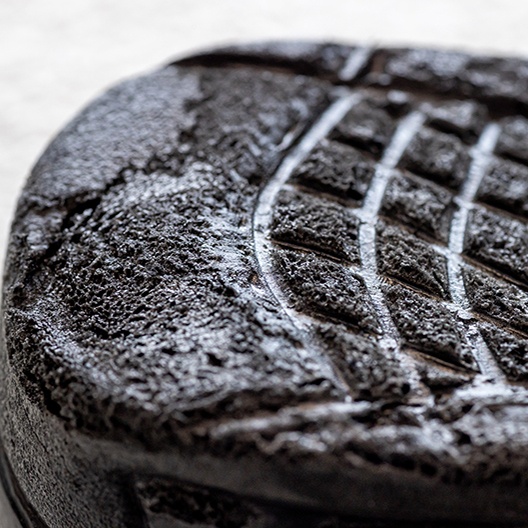
- Polyurethane
- 3 Steps for Working with Chem-Trend® Products in Polyurethane Moulding
- Video Tutorials: How to properly apply Chem-Trend® release agents, sealers, paste waxes in polyurethane moulding processes
- Improve your shoe sole moulding process!
- Digitalization to Enhance Control and Sustainability by Delivering Data
Poor release and poor surface quality of a shoe sole
Description:
Solvent or water burn occur in the production of shoe soles and thus lead to a reduction in release ease and surface quality.
Affected Foam Parts:
Affected are polyester and polyether shoe soles, soles with single and dual densities, direct attach and unit soles.
What causes it:
This type of surface defect is usually related to the release agent. For example, poor evaporation of the carrier, excessive application, poor atomization or too little distance between the spray gun and the mould surface can negatively influence the release agent application and thus the release effect and surface appearance. The mould temperature also influences the effect – if it is too low, release problems and surface disruption can be the result.
- Poor evaporation of the release agent carrier
- Overapplication, wet mould
- Bad atomization
- Too close spray gun to mould surface
- Low mould temperature
Solutions:
Checking and optimizing release agent flow rate as well as the temperature and surface of the mould help to improve the poor release performance and surface quality of shoe soles.
- Check the throughput on RA gun and adjust as needed
- Check the mould temperature
- Check the mould surface before PU pouring/injection – the mould should be dry and without wet spots
RELATED CASE STUDIES
© 2025 Chem‑Trend L.P. or Chem‑Trend affiliated company. All rights reserved.
Regional websites:
-
Argentina
-
Brasil
(Brazil) -
Canada
-
Česko
(Czech Republic) -
Deutschland
(Germany) -
España
(Spain) -
France
-
India
-
Italia
(Italy) -
México
-
România
(Romania) -
Polska
(Poland) -
United Kingdom
-
United States
-
Việt Nam
(Vietnam) -
CIS
-
中国
(China) -
한국
(South Korea) -
日本
(Japan)
Notice
You are about to exit this page. You will be redirected to the Chem‑Trend Global website where you’ll find your requested content in English.
Continue